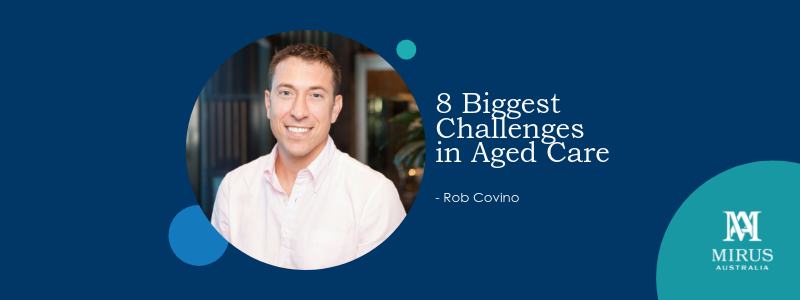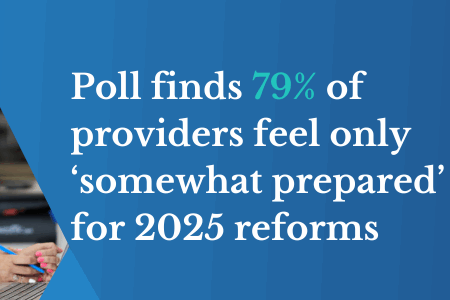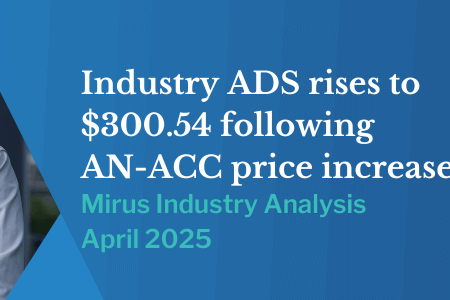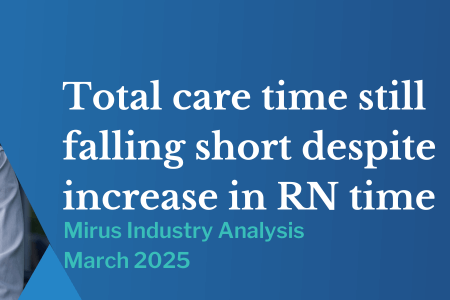VUCA: Counting down the 8 biggest challenges in aged care with Rob Covino
March 27, 2019 | Aged Care Management

It took over 200,000 years of human history for the world’s population to reach 1 billion; and apparently it will take only 200 years more to reach 7 billion.
But what about the immediate future?
“This is definitely unprecedented times and we should all be positioned to deliver on the demands this will mean to the industry.” said Rob Covino, Executive Director, Mirus Australia at the recent 5th Annual Aged Care Procurement Conference in Sydney, Australia.
Rob summarised both the old problems and the new challenges facing the aged care industry in Australia including a greater impact of funding and validations on organisations and response to the recent ‘spike’ of sanctions across the country.
“However, these challenges can also be re-engineered to become opportunities, not only for the workforce and organisations, but most importantly the care recipients. The essence of our competitive market is to drive an increased focus on clinical needs and professional development of staff and where no single consumer or group can dictate what the choices are. Of note, however, is that currently 68% of the Medicare Database has some form of dementia diagnosis associated with their claim.”
And it’s changing fast. In an environment of volatility, uncertainty, complexity and ambiguity (VUCA) its important to understand what to tackle first. A summary of the 8 biggest challenges in aged care today, as counted down by Rob Covino at the Conference:
8. Governance and workplace culture will need to be measured and reported.
Collecting information and data about the quality of life of consumers and ensuring publicly available will assist the sector in developing standards and improved consumer choice and decision–making. Equally, improved practices in data privacy and protecting the identity of consumers is not best practice, it’s the law.
7. Access to capital has shifted and banks are now adapting covenants to reflect changing risk profiles.
Refundable Accommodation Deposit covenants are now being written as collection, not booked or contracted. Auditors are requesting Providers to ensure provisional funds for Validation risks & Claw Backs for is available.
6. The Agency is on a path to demonstrate results & resident safety.
In the wake of the Carnell Paterson Review & the Royal Commission, the Aged Care Quality and Safety Commission is sanctioning facilities at a level which we have never seen before. As the transfer of the Accreditation model to the Standards with unannounced visits, for example. Providers are struggling to manage the 24/7 hour, 365 per days environment that is aged care. These pressures add to the cost of managing business as usual activities. We predict a further consolidation across the Industry as those who can afford to comply will need to team with those who have scale. Organisational systems and processes need to change and be updated to be operationally ready. As of mid-March, 31 sites have been sanctioned and a further 89 further sites are currently on notice.
5. Providers have a split voice of advocacy with 2 peak associations against the single voice of the Consumer (COTA).
We encourage providers to control the dialogue between the organisation and the families who visit to help shape the message back to the other stakeholders in the community. Access to credible PR advice and reputational management process and systems in the event of a negative outcome (Non-compliance, Sanction, media). Do we need a greater emphasis on a unified voice?
4. Choice & the Consumer. Sentiment is low and the perception towards Providers is shifting towards mistrust.
We are aware of challenging communication between providers and Consumers and their families, particularly in regard to additional fees and extra Services for example. Following the listing of Estia, Providers had full disclosure on their ability to drive income from the Aged Care Instrument. This led to a targeted focus for providers to utilise components of the funding instrument to optimise their claim outcomes, similar to our tax system. Providers have the ability to optimise claims for funding under the requirements set out by the Department.
3. Fatal blows via validation and/or agency outcome on Providers who are struggling to be sustainable
There has been a steady increase in the percentage of claims downgraded & the number of providers managing validation over the last 5 years. Join Rob Covino every month via Mirus Industry Analysis (MIA) as he unpacks the trends from the previous month.
2. Two speeds of providers: – those who are running sustainable businesses & those who are not.
Change is happening fast. Observations just over the past 7 years include an increased focus on revenue management and financial sustainability, stakeholder management, consumer centric marketing and the changing needs of the workforce.
1. Access to a skilled workforce & the changing shape of the clinical roles.
Are we asking too much from our leaders? Today we expect our RNs to have an MBA or a business manager with nursing experience and not the other way around. Today there is also a focus on stakeholder and community management, sales & marketing experience and revenue management skills
Rob Covino’s key takeaway was don’t try and do it alone!
“We are managing many old problems but also new challenges. But ‘we’ve always done it this way’ can’t be the mantra for future. We need new thinking to address modern issues. To achieve success in this VUCA world and change in activity requires a collaboration founded on trust, an investment in strong process, and sometimes a change in the organisation’s culture towards utilising external help and resources. We know that Providers adopting this approach are creating new rewards and opportunities for their organisation and staff”.
For further information or to discuss how Mirus Australia is responding to some of these challenges please contact us here or via the Mirus Client Centre.


